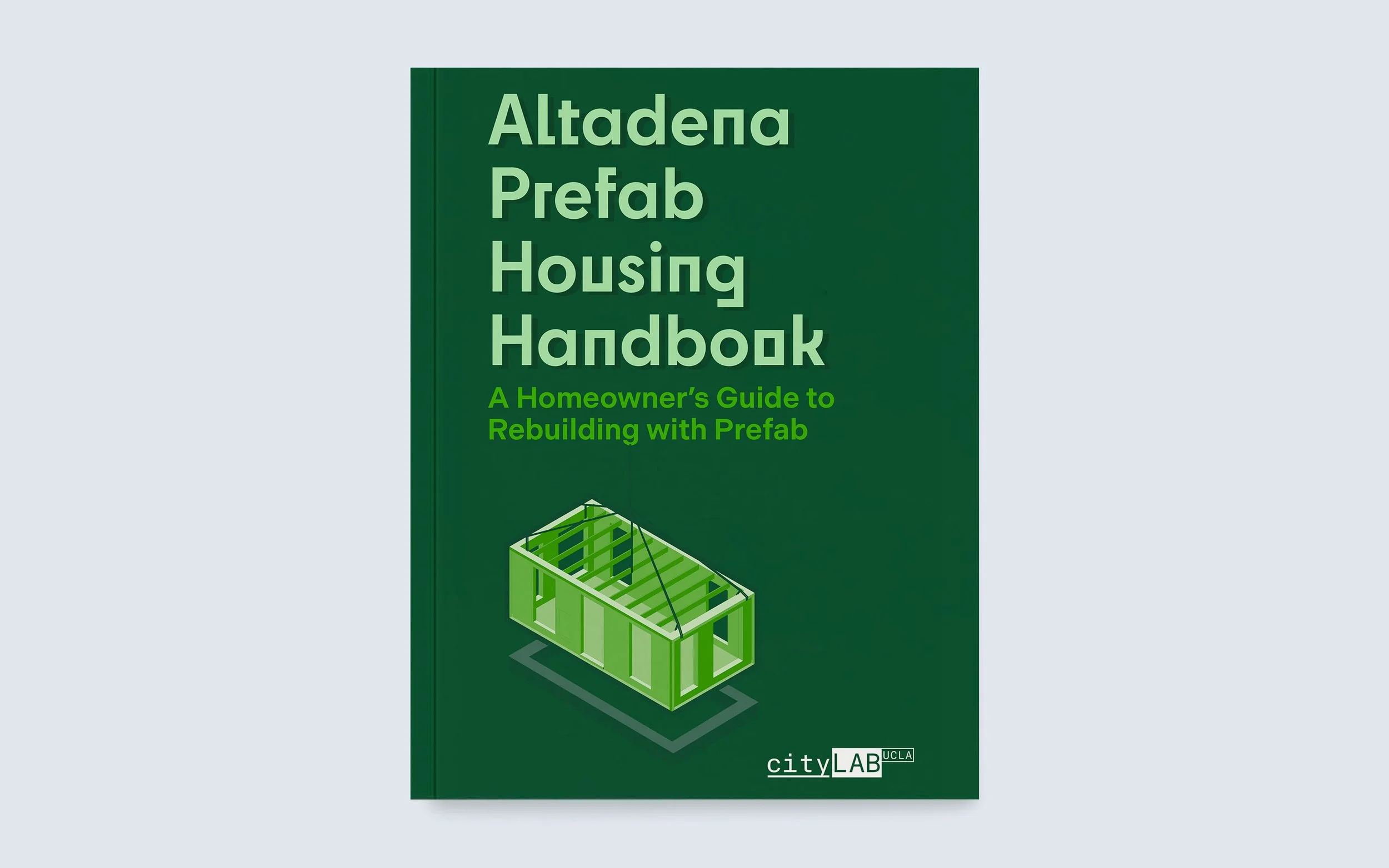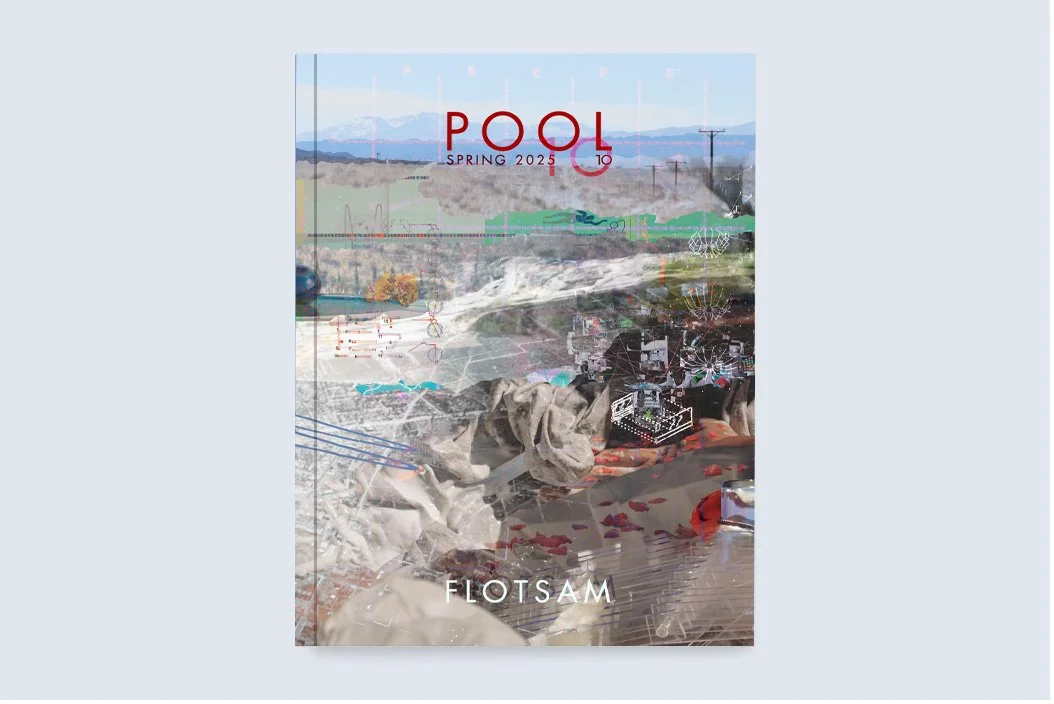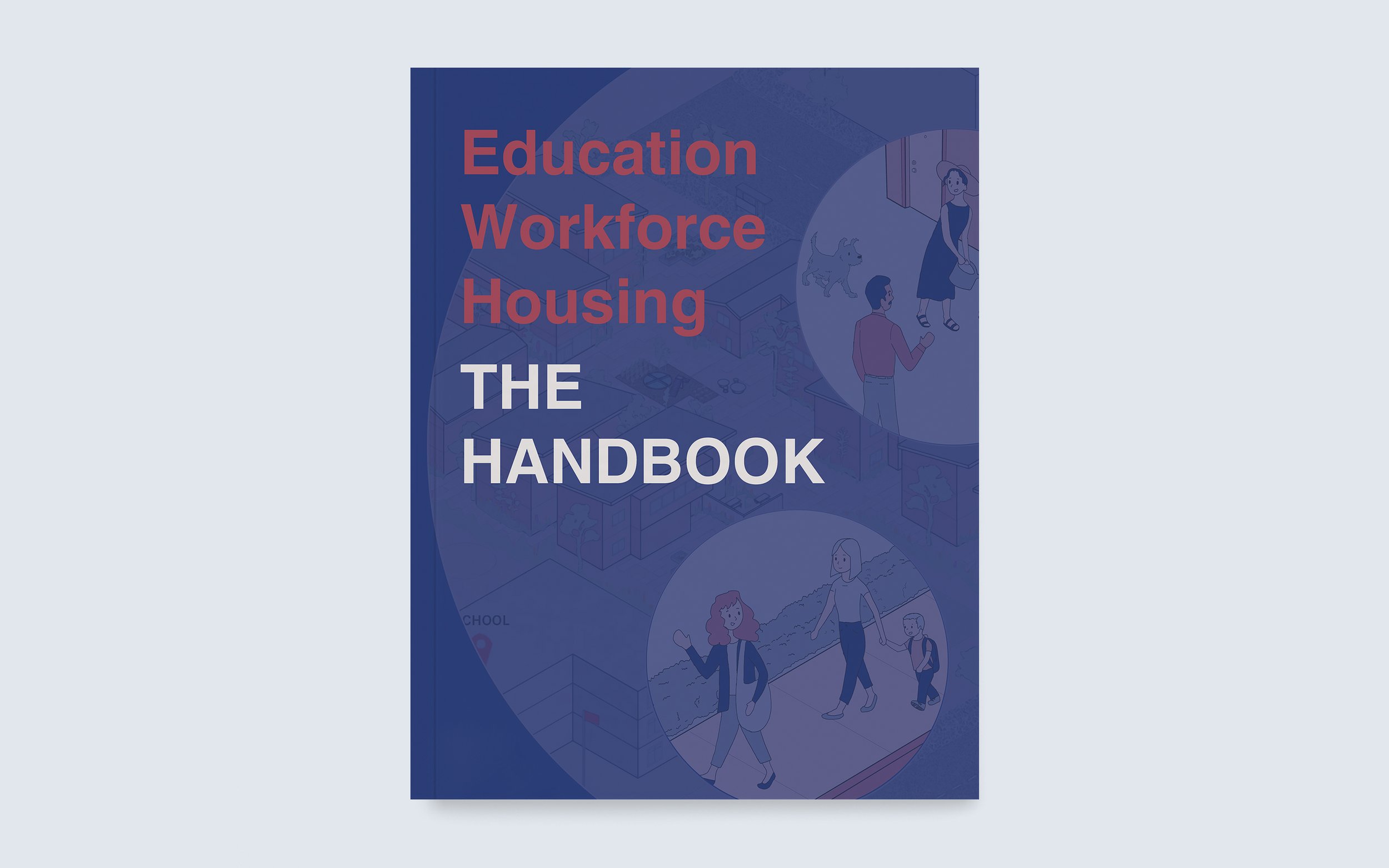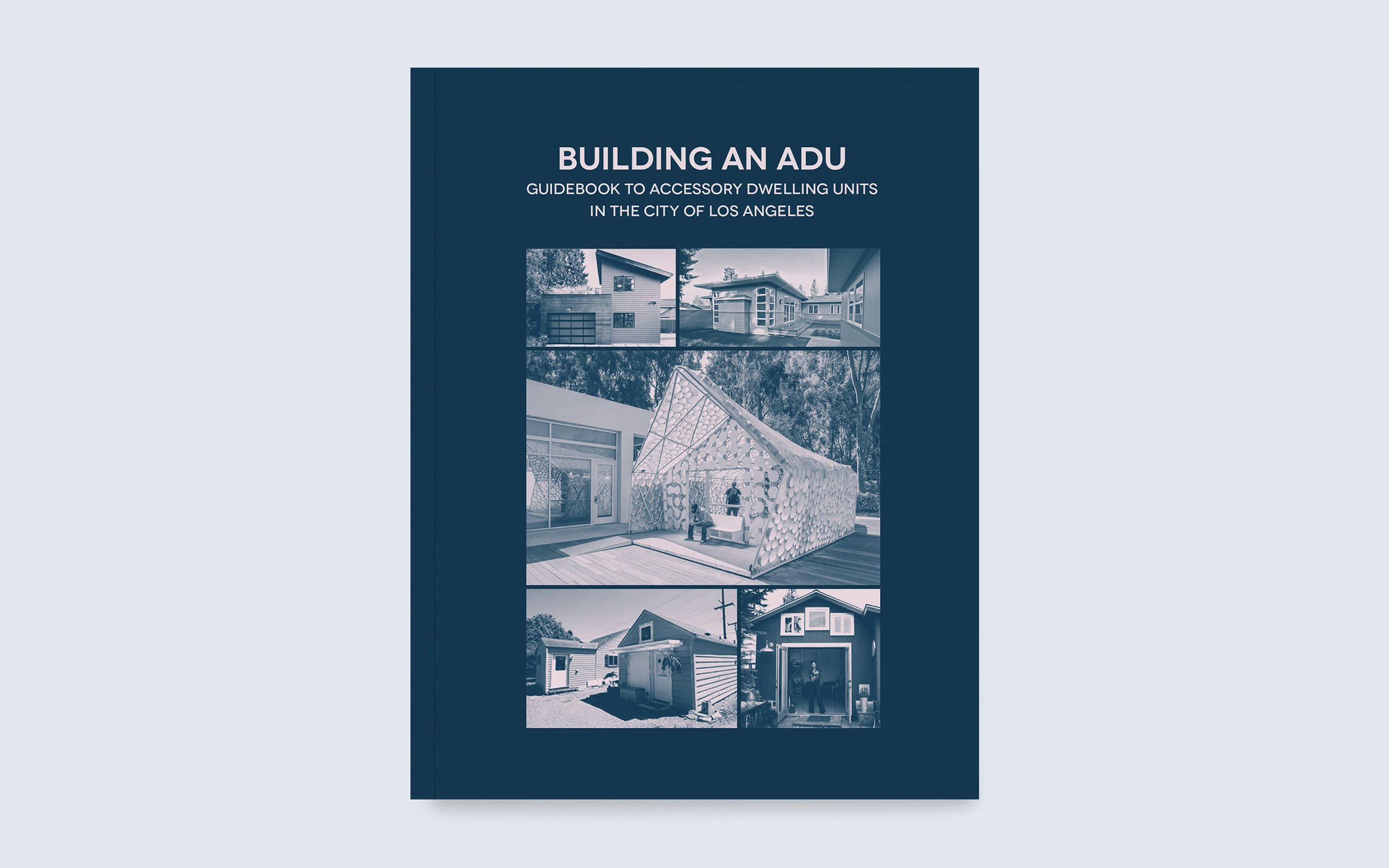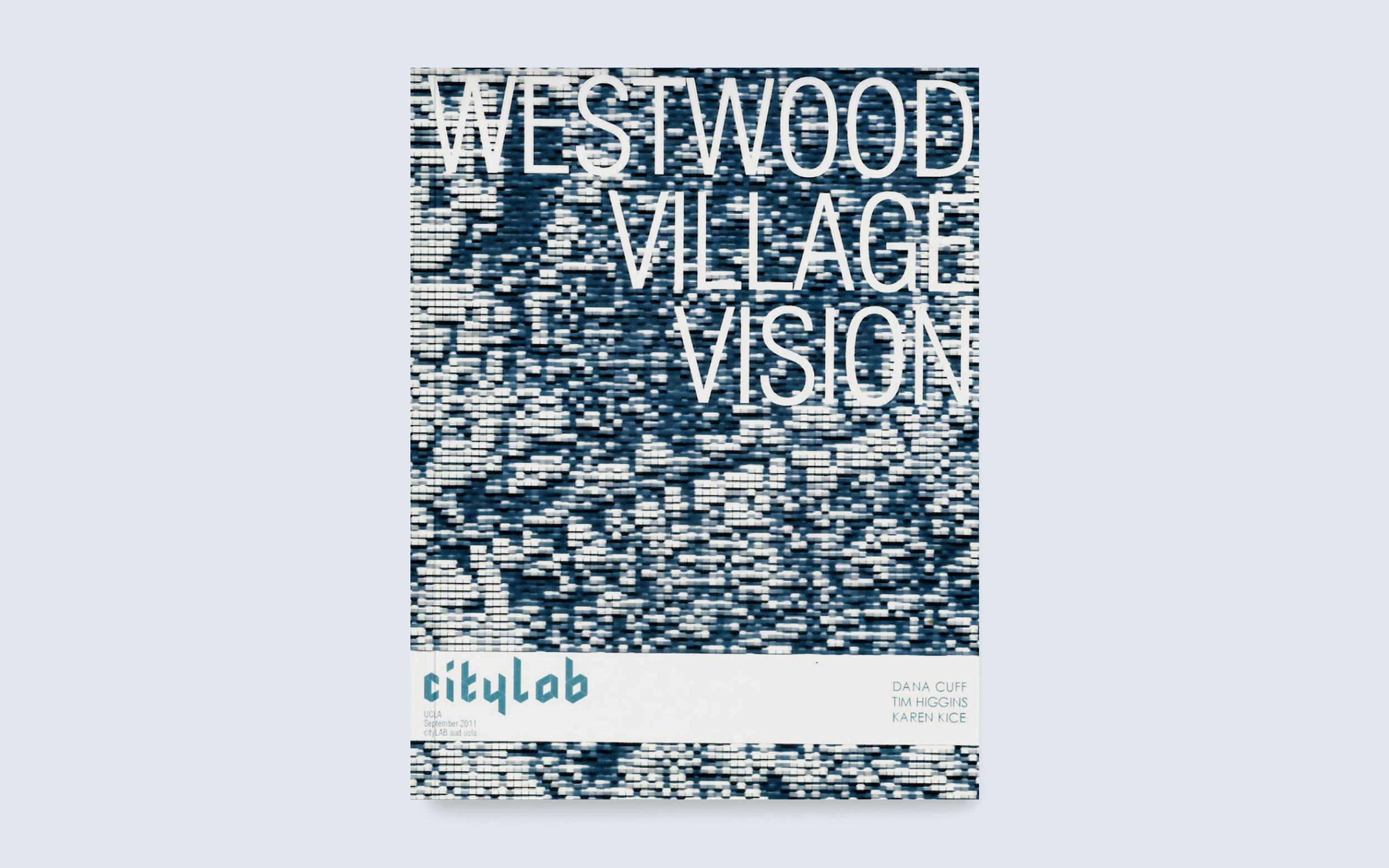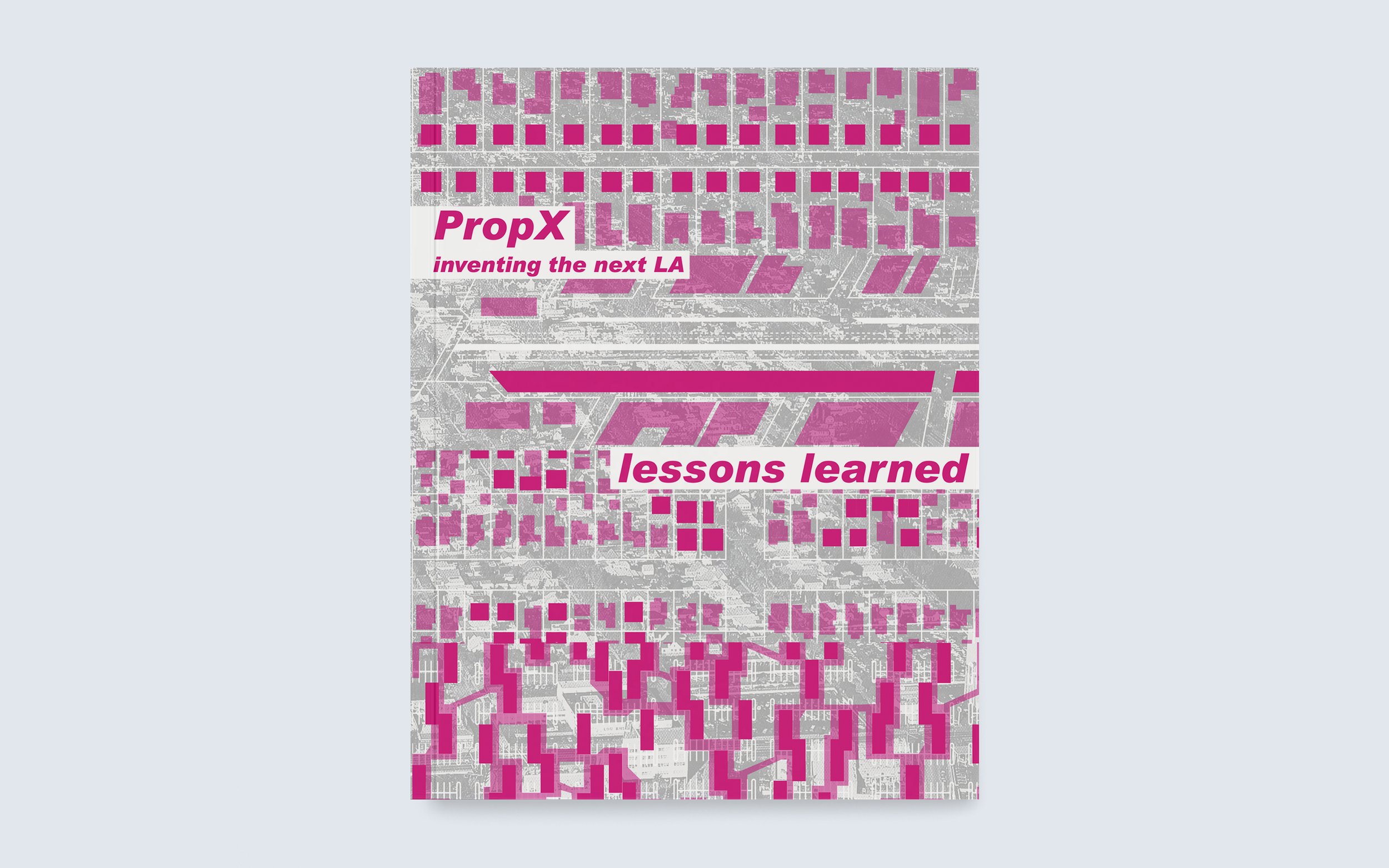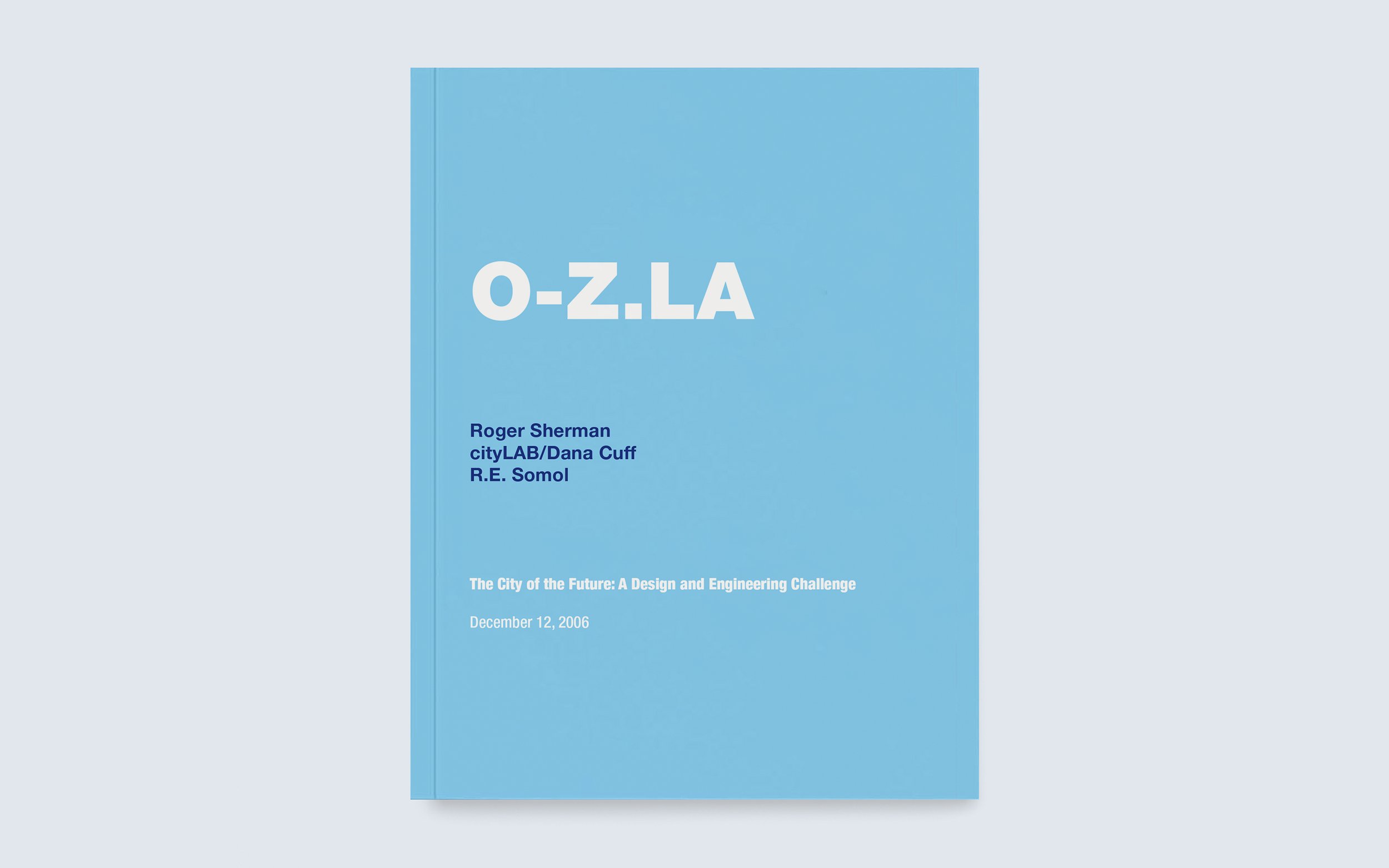Building upon more than a decade of research in the city.
Altadena Prefab Housing Handbook
Year: 2025
Designed to help fire survivors in Altadena and beyond, this handbook answers the most common questions we’ve heard about prefab on the pathway to rebuilding. From construction types to cost ranges to detailed financing and insurance questions, this guidebook helps families understand today’s prefab market and decide whether it’s the right choice for their rebuild.
Evaluating the Housing Potential of California's Community College Campuses
Year: 2025
Economic stability is the
most significant indicator of educational success among community college students; however, underrepresented students—including but not limited to students of color, adult students, Perkins Economically Disadvantaged students, first generation college students, and/or part-time students—are most likely to experience barriers to economic stability, the greatest of which is a lack of affordable housing. California's Community Colleges have the space to accommodate affordable housing: their 115 main campuses total more than 12,000 acres of land. And cityLAB-UCLA’s research shows that CCCs can leverage
these lands for positive social impact. With this report we aim to contribute to the
development of safe, accessible, and affordable housing solutions that support student success.
Housing California Educators: Insights from Nine Education Workforce Housing Developments
Year: 2025
The rising cost of housing in California has made it increasingly difficult for teachers and other school staff to live near their places of work, exacerbating teacher shortages and staff retention challenges. In response, local educational agencies (LEAs) across the state have begun developing workforce housing to provide affordable living options for school employees. This report examines the experiences of nine LEAs that have successfully navigated the complex process of planning, financing, and constructing education workforce housing (EWH).
Flotsam: Parcel Drift
Year: 2025
Parcel Drift reinterprets underutilized public land in Los Angeles through computational cartography. cityLAB-UCLA and Studio Imai Conway map 4,915 overlooked parcels, encoding site size, geometry, and transit accessibility into RGB values. This method transforms GIS data into actionable insights, revealing opportunities for infill housing and reframing bureaucratic flotsam as urban potential.
Sidewalking: A toolkit for engaging youth in planning and designing urban mobility futures
Year: 2024
The Sidewalking toolkit supports youth mobility and youth agency by sharing effective, design-based strategies for engaging young people in envisioning their own mobility futures. We created this guide to help planners, designers, policymakers, and advocates who are already invested in supporting safe, social mobility options for youth, and who are looking for effective strategies to involve young people directly in planning and design decisions regarding their urban mobility. The toolkit provides practical guidance for collaborating with youth around issues related to mobility, sidewalks, and the public realm by highlighting effective, actionable insights drawn from our research. This research was conducted in partnership with Heart of Los Angeles (HOLA), a community-based organization in Westlake that provides after-school programming to thousands of neighborhood youth.
California Community Colleges
Year: 2023
California’s community college system offers quality, affordable education that improves outcomes for its diverse and underserved population. Yet only 12 of California’s 116 community colleges currently offer on-campus housing, providing just 2,321 beds in a system of 1.8 million students. In 2022, the state appropriated significant funding for planning and construction of affordable student housing, gathering proposals from 70% of the community colleges. This report comprises an evaluation of the existing student housing, an analysis of current proposals to the state, interviews with key facilities staff at community colleges, and a survey of emerging design models for affordable student housing. Together, this permits an evaluation of the success of the appropriations, how community colleges are responding, and whether policies and funding could be made more effective.
Place to Be
Year: 2024
Place to Be offers guidance for public health providers, planners, designers, and policy makers seeking new, open-access ways to understand and serve the needs of unhoused Angelenos. With an interdisciplinary team of researchers from public health, architecture, and urban planning, as well as an intimate group of providers and unhoused constituents from a non-traditional health program, we undertook analysis of wellbeing metrics, key informant interviews, and participatory design research. In each we sought to better define wellbeing – a sometimes vague term in health – particularly in consideration of how understandings of wellbeing differ for unhoused people.
Pathways to Autonomy
Year: 2023
Youths’ independent travels through the city represent important pathways to autonomy, agency, and urban citizenship, which a city can support with safe, pleasant paths that offer reassuring familiarity and opportunities for socializing. Using the concept of “sidewalk ecologies” and interdisciplinary youth-centered research methods, this study captures a rich portrait of the independent travel experiences, perceptions, and ideas of late elementary, middle, and early high school students as they travel independently from school to after-school activities in Westlake, Los Angeles.
Architectures of Spatial Justice
Year: 2023
Organized around projects and topics, Architectures of Spatial Justice is a compelling blend of theory, history, and applied practice that focuses on two foundational conditions of architecture: its relation to the public and its dependence on capital. Emerging from more than two decades of the author's own project-based research, Architectures of Spatial Justice examines ethically driven practices that break with professional conventions to correct long-standing inequities in the built environment, uncovering architecture's limits—and its potential.
Left Out, Priced Out
Year: 2023
Left Out, Priced Out highlights four proposals for reimagining student accommodation at UCLA to address both short and long-term affordability issues, as well as to provide maximum flexibility for students. In order to better serve the needs of “nontraditional students,” the report suggests that the university should consider a continuum of accommodations: Co-Ops, student hoteling, commuter hubs, and Stay-tions.
“We should all feel welcome to the park”: Intergenerational Public Space and Universal Design in Disinvested Communities
Year: 2022
Through working with youth and older residents (over 65) of Westlake to examine their public space use, experiences, and desires, this article investigates the potential for intergenerational public space in the Westlake neighborhood of Los Angeles. Our findings yield insights for creating more inclusive and accessible public spaces in disinvested urban neighborhoods as well as opportunities for allyship between groups whose public space interests have been marginalized by mainstream design standards.
Camino Seguro: Safe Passage & Campus Connection for Burlington
Year: 2022
Camino Seguro or "the safe passage" is a community based design project that examines the use of the sidewalk surrounding Camino Nuevo Charter Academy’s (CNCA) Burlington campus. Our findings highlight existing areas of strength and opportunity and propose interventions that could activate the relevant public space, creating a safer and more welcoming sidewalk environment for all.
California 100: The Future of Housing and Community Development
Year: 2022
California 100: The Future of Housing and Community Development uses a scenario planning research method to lay out four possible “quadrants” for the future of housing in California, based on the axes of production and equity.
cityLAB Annual Report 2021
Year: 2021
The highlights of 2021 at cityLAB: we designed and installed the BruinHub for housing-insecure UCLA students; completed a design research effort into the co-location of affordable housing with public schools; projected the future of California’s housing development; and curated an exhibition of cityLAB’s work alongside that of colleagues in the Architecture & Urban Design Department.
Education Workforce Housing in California: Developing the 21st Century Campus
Year: 2021
Education Workforce Housing in California: Developing the 21st Century Campus provides a comprehensive overview of the potential for land owned by school districts to be designed and developed into housing for teachers and other employees.
Education Workforce Housing: The Handbook
Year: 2021
This Handbook is an action oriented companion to the report “Education Workforce Housing in California: Developing the 21st Century Campus.” The illustrated Handbook provides a how-to guide for school boards, administrators, and community members to advocate for and advance the development of education workforce housing on underutilized schools lands in communities across California.
Creating Common Ground
Year: 2021
This study examines public space use and experiences of low-income older adults and youth in the Westlake/MacArthur Park neighborhood of Los Angeles, yielding insights into the potential for intergenerational uses of public space in inner-city neighborhoods. The primary goal is to understand the public space needs and values of these two groups and explore the similarities and differences in their use of neighborhood public spaces, both before and after the onset of the COVID-19 pandemic.
Urban Humanities: New Practices for Reimagining the City
Year: 2020
Humanities is an emerging field at the intersection of the humanities, urban planning, and design, offering a new approach not only for understanding cities in a global context but for intervening in them, interpreting their histories, engaging with them in the present, and speculating about their futures. This book introduces both the theory and practice of urban humanities, tracing the evolution of the concept, presenting methods and practices with a wide range of research applications, describing changes in teaching and curricula, and offering case studies of urban humanities practices in the field.
LA County Equity
Year: 2020
This report investigates how equity planning can begin to address systemic inequality and racism within planning codes, processes, and legislation. cityLAB looked to the historically Black and now majority Latinx neighborhood of Florence-Firestone to better understand the existing conditions and needs of one unincorporated, highly segregated community, and to envision a pilot project that transforms existing resources into cohesive community hubs.
“My Commute is Hell”
Year: 2019
cityLAB’s research shows that UCLA students with extreme commutes (60 minutes or more) comprise a hidden population of housing-insecure students, who need particular campus accommodations to address hurdles that negatively impact their daily lives and academic performance. This report presents recommendations for new solutions so that students with extreme commutes are treated with dignity, compassion, and without stigma.
Living in the 21st Century Schoolyard
Year: 2019
cityLAB’s research argues that every public school site has some opportunity for housing development, and examines various housing typologies, potential shared uses between housing and schools, and intersections between the school and the neighborhood. This report visualizes a series of sited design prototypes for K-12 schools, community colleges, and 4-year universities that demonstrate benefits to schools, residents, and neighborhoods.
Backyard Housing Boom: New Markets for Affordable Housing and the Role of Digital Technology
Year: 2019
Through interviews conducted with emerging ADU (accessory dwelling unit) service providers in Los Angeles, this paper identifies how digital technologies and regulatory change are enabling emergent forms of practice and production for addressing a significant housing shortage. Specifically, it asks what role digital technologies may play in facilitating the mass production of affordable housing in the post-suburban city.
Opportunity Starts at Home
Year: 2019
The Los Angeles Community College District’s (LACCD) student body experiences high levels of housing insecurity and the district possesses underutilized parcels of land. This report informs District leadership and relevant stakeholders with a basic but detailed overview of why, how, and where development of housing for underserved students, particularly those experiencing homelessness, could proceed.
Experiments in Student Housing: A Preliminary Report
Year: 2018
This report is the culmination of a summer-long study of student housing insecurity at UCLA, and investigates two student populations with unmet needs: full time residential students with deep financial need and super commuters. cityLAB analyzed these scenarios to inform short- and long-term recommendations for the university, and to expand the range of potential housing alternatives for housing-insecure UCLA students.
Housing as Intervention
Year: 2018
cityLAB’s research and development of a prototype “backyard home” model have contributed to the establishment of the bill that enables the legal addition of a rental unit to all single-family homes. Its impact has been immediate, both empowering residents to incrementally make their own homes more flexible and affordable, and opening up countless opportunities for architects.
Lessons About Projecting the Metropolis
Year: 2018
This essay considers how the city can serve as not only an object of study, but as a vehicle for advancing the ways we study its spaces and cultures, particularly through the urban humanities project at UCLA. Urban humanities is a proto-field with a project-based pedagogy that builds a collaborative network between architecture, urban studies, and the humanities (including anthropology), in order to understand the history, contemporary circumstances, and possible futures of cities.
From Archive to Office: the Role of HIstory in Theories of Architecture Practice
Year: 2018
This article examines the ways in which history has since been embraced or resisted within studies of architecture practice, including those informed by science and technology studies, cultural anthropology, and architectural history. This article reveals methodological intersections between these approaches that may serve as a common discursive ground upon which to connect the past to the present, the archive to the office, or the discipline to the profession.
Building an ADU
Year: 2017
Building an ADU - Guidebook To Accessory Dwelling Units In The City Of Los Angeles was produced in conjunction with AB2299, the land use bill that makes it much easier to build an accessory dwelling unit in the state of California. This guidebook helps you to get started and to prepare the basic information you will need to give the City (at the Dept. of City Planning and the Dept. of Building and Safety), your lender, your designer, and your contractor.
cityLAb, times 10
Year: 2017
cityLAb, times 10 celebrates the founding of cityLAB-UCLA ten years ago as it looks ahead to the next ten years. It advances architecture as a radical urban ingredient, with impacts that can be orders of magnitude greater than any individual building, by "powers of ten."
Beyond Creative
Year: 2016
cityLAB has partnered with a wide range of organizations that are interested in new alternatives for office design, studying contemporary work patterns, information technology, workspace, and workplace trends. That research is documented here, along with several design proposals that demonstrate a range of architectural alternatives to conventional office design.
IT Workplace Futures
Year: 2015
This pilot study opens the conversation about how we might design better spaces for IT work and workers, based on the current conditions within eight member organizations of the IS Associates who sponsored the research. This report summarizes common workplace design concerns and reveals preliminary implementable strategies particular to technology work.
Housing in the RiverCity
Year: 2015
This handbook synthesizes two years of research, from 2012-2014, about recent housing in Gothenburg, Sweden and proximate locations and converts the findings into practical applications that can constructively influence further efforts on the RiverCity Gothenburg Vision, most particularly the
Backyard Homes and Local Concerns
Year: 2014
This study examines local concerns about backyard homes (accessory dwelling units) and how those concerns might be addressed. The study’s findings suggest that there are unexpected ways to respect local concerns while at the same time increasing the supply of more affordable, more flexible housing through the addition of legal backyard homes.
The Future of Office Work: Re-Wiring Work
Year: 2014
This cityLAB + Gensler Los Angeles publication builds upon year one’s historical research on the conditions of knowledge-based office work in downtown Los Angeles and specifically seeks to reveal new opportunities for critical urban and architectural design. The research in year two focuses on developing methods for analyzing and locating sites for future innovation in downtown Los Angeles.
The Future of Office Work: How We Got Here
Year: 2013
This cityLAB + Gensler Los Angeles publication instigates a new conversation about the future of office work, office buildings, and their impacts on downtown Los Angeles (DTLA). This publication develops a critical understanding of DTLA’s current situation as a site for knowledge-based work.
HSR Development: Planning for High Speed Rail in Southern California Communities
Year: 2013
This study identifies the potential effects of high-speed rail (HSR) stations on Southern California communities and delineates some policy, planning, and urban design guidelines for positive development around the proposed Southern California HSR stations.
Planning for Complementarity
Year: 2012
The research in this report explores the different but complementary roles that first-tier and second-tier cities along the High-Speed Rail network can play in making California more sustainable and less dependent on fossil fuels while reducing mobile sources of greenhouse gas emissions and congestion at airports and on roadways. Drawing from case studies of cities in Northern and Southern California, the study develops recommendations for the planning, design, and programming of areas around California stations for the formation of transit-supportive density nodes.
Tracks of Change
Year: 2011
This study researches the effects of High-Speed Rail (HSR) on land use and development in order to guide planning and policy efforts directing development around HSR stations. Research findings inform alternative visualizations of development among case study sites, as well as a generalizable set of best practices for station-area planning and design.
Westwood Village Vision
Year: 2011
cityLAB research looked behind the myths about Westwood’s problems to formulate two visionary scenarios: an L.A. neighborhood that could lead the way to a car-less, or at least "car-lite" future; and an arts and culture district that reactivates a dynamic, sustainable place.
Fast Forward Urbanism
Year: 2011
In the wake of recent failures in America's urban infrastructure, an emerging group of activist designers are calling on architects to work with the realities of urban space, find hidden opportunities in what already exists in our cities, eschewing monolithic, top-down approaches. Fast-Forward Urbanism presents a mixture of essays, opinions, and design projects by well-known architects and theorists including Stan Allen, Will Alsop, Lars Lerup, and Keller Easterling; equal parts theory and practice, their ideas lay the groundwork for the next American metropolis.
Backyard Homes LA
Year: 2010
Backyard Homes proposes innovative, flexible, environmentally sensitive, and affordable architectural models for infilling Southern California's iconic single-family residential fabric. This publication describes the logics, design, and implementation of Backyard Homes as a response to current conditions in Los Angeles.
L.A. under the Influence: The Hidden Logic of Urban Property
Year: 2010
Roger Sherman contends that it is property stakeholder negotiations, rather than more commonly accepted factors like history and planning, that not only shape a city but also influence the development of its smallest common increment: the individual parcel. Through a series of case studies in Los Angeles, Sherman applies game theory to scrutinize the behavior of these intersecting private and public interests, revealing an alternative logic of architectural composition.
WPA 2.0
Year: 2010
WPA 2.0: Working Public Architecture is a design competition and symposium seeking innovative, implementable proposals that place infrastructure at the heart of rebuilding our cities. This publication presents research findings drawn from the competition, workshop, and symposium regarding criteria for new infrastructure and strategies for action.
PropX: Lessons Learned
Year: 2007
In summer of 2006, over forty young professionals working in five cross-disciplinary teams participated in PropX, a summer-long competition seeking feasible outside-the box solutions to providing more affordable, market-rate housing in LA. This publication presents lessons learned from all five PropX projects and the conversation they generated.
O-Z.LA
Year: 2006
The projection of multiple, alternative O-Zones in Los Angeles – diverse experiments in social and material arrangement – disrupts older urban categories (ethnic, economic, gender, generational, and even geographic) by producing new audiences that cut across those social and spatial statics, undermining previous models of identity politics and special interest.
The Provisional City
Year: 2002
Focusing on Los Angeles, Cuff looks at urban transformation through the architecture and land development of large-scale residential projects. Cuff explores five cases that span the period from the 1930s, when federal support for slum clearance and public housing caused convulsions near downtown, to a huge 1990s' mixed-use development on one of Los Angeles's last remaining wetlands, illuminating the relationship of housing architecture to issues of race, class, urban design, geography, and political ideology.
Architecture: The Story of Practice
Year: 1992
In this book, Dr. Dana Cuff delves into the architect's everyday work world to uncover an intricate social art of design. The result is a new portrait of the profession that sheds light on what it means to become an architect, how design problems are construed and resolved, how clients and architects negotiate, and how design excellence is achieved.
Architects’ People
Year: 1989
This study presents architects' ideas about their "people" – the people who are imagined to occupy the buildings designed and executed by architects. Contributors such as Robert Gutman and Kent Bloomer provide fourteen diverse essays that look at individual architects – among them Vitruvius, Wright, Esherick, and Eisenman – and their spoken and written images of social life, their design solutions, the nature and origins of architects' people, and architecturally related policy, politics, and movements.

